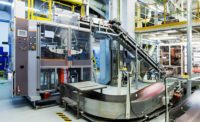Our industrial activities have a significant effect on the environment. We have become cognizant of the impact in recent decades and concluded that going along this course is disastrous for the environment and ourselves. This has prompted initiatives to reduce the amount of carbon emissions we generate. The manufacturing sector, being a major contributor to carbon emissions, has to take drastic steps to combat emissions.
Carbon contributions of manufacturing
According to the Environmental Protection Agency (EPA), 23% of all carbon emissions in the United States are from the manufacturing sector. This makes the manufacturing sector one of the largest contributors to carbon emissions. Carbon emissions from industries occur in both direct and indirect ways. Some of the major ways industries contribute to emissions are discussed in the following sections.
Fossil fuel combustion
Industrial processes that directly burn fossil fuels are large contributors to carbon emissions. Industrial boilers and other equipment that require heat burn fossil fuels - the major fuels used are coal, oil, and natural gas. Cost, availability, and suitability to process are some of the important factors for the decision of which fuel is burnt. This direct combustion of fossil fuels has to be decreased to combat carbon emissions. Moving to cleaner fuels will also help in this regard.
Raw materials
Raw materials used in plant floors are extracted from various sources. They are obtained by mining processes or other industrial processes. Though the methods may vary, there is no doubt that the raw materials we source have a considerable carbon footprint. This is an indirect method by which manufacturing plants leave behind a carbon footprint.
Electricity usage
Manufacturing plants consume electricity to power their operations. We just consume the power available from the grid and do not investigate the source of the power generated. Electricity used could be generated by burning fossil fuels or other carbon-intensive methods, which indirectly adds to the carbon footprint of a factory that uses power generated from unclean sources.
Transportation
Transportation is another part of industrial processes that adds to the carbon footprint. This includes transporting raw materials to the factory, transportation between different processes, and transporting finished goods to consumers. Transportation in the supply chain is dependent on burning fossil fuels. This, directly and indirectly, contributes to carbon emissions from a manufacturing plant.
Inefficiency
Inefficient industrial processes consume more energy - it’s reflected in the increased consumption of fossil fuels and electricity. We often overlook the inefficiency of processes in discussions regarding carbon emissions and commit errors of omission by not addressing inefficiencies in manufacturing plants.
Cloud technologies in manufacturing
Digital transformation efforts with cloud technology are changing the face of all industrial sectors. Many such technologies are widely used in manufacturing, but some of the key ones are:
- Manufacturing execution system (MES): MES uses cloud technology to track and document complete manufacturing processes occurring in a plant. This makes the information flow easy across the manufacturing value chain.
- Computerized maintenance management system (CMMS): CMMS uses cloud technology to track all maintenance activities of a plant. It also enables automated maintenance, preventive maintenance, and predictive maintenance.
- Enterprise resource planning (ERP): Cloud technology is employed by ERP to plan and control all business processes of an enterprise. Managing manufacturing is also a key element of tasks performed by ERP.
- Digital twins: Digital twins are virtual twins of machines living in the cloud which use real-time data fed by IIoT devices to run the virtual machine. They can be used to design new devices and also to improve the operations of existing devices.
- Manufacturing analytics: It uses historical and real-time data from plant operations to optimize operations. We can employ manufacturing analytics to increase yield, optimize operations, and reduce cost.
Carbon emissions - cloud = lower carbon footprint
The various cloud technologies integrated with manufacturing processes can decrease the carbon emissions of a plant. MES systems help to gather and disseminate all data regarding the manufacturing process. This data can be used by the manufacturing analytics suite employed by the firm to find avenues to optimize processes. ERP systems can also be used along with analytics capabilities to optimize processes. The processes can be optimized to consume less energy, take less time and even be used to explicitly reduce carbon footprint.
CMMS systems help to perform maintenance activities promptly. This ensures that machines run at the highest efficiency, and in turn reduces energy consumption and carbon footprint. Machines that are not maintained properly generate a higher amount of emissions. This chance is eliminated by using CMMS.
Digital twins can be used to analyze current operations in real time. This can help to identify the reasons for carbon emissions. Digital twins combined with analytics can help identify solutions to reduce emissions. They can also be used to design better machines in future iterations.
Some of the ways these cloud technologies reduce emissions are:
- Reduce production time
- Processes can be optimized to consume less time
- Optimizing consumption of fossil fuels
- Reduce electricity consumption
- Identify a better mix of raw materials sourcing that have a lower carbon footprint
- Identify a more efficient plant layout
- Optimized routes for transportation
- Predictive maintenance to reduce machine inefficiency
- Sustainable manufacturing future
We are at an inflection point in the industrial sector where we have to take ownership of the effects manufacturing has on the environment. We have to take help from all avenues to reduce the carbon footprint of our plant floors. Cloud technology is a powerful tool in our arsenal to combat carbon emissions from factories and helps to reduce emissions and improve our processes at the same time.
We have to aggressively incorporate cloud technologies in our processes to combat environmental impacts. Even using one of the cloud technologies is beneficial to reduce emissions, but the full force of cloud technology is harnessed by combining them. For example, CMMS can help in reducing emissions by ensuring efficient machine operations, but combining it with manufacturing analytics gives predictive capabilities, which is far more useful. We have to take a proactive role to reduce carbon footprint by harnessing cloud technology.



